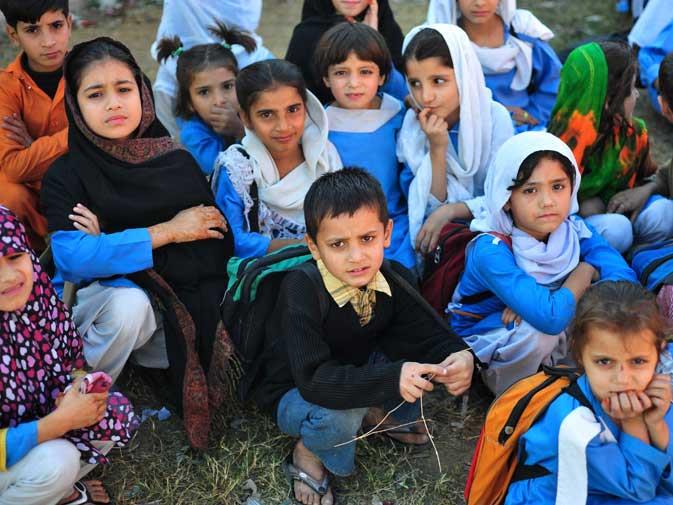
Number of out of school children in Punjab unchanged: Report
LAHORE: The number of children out of school across Punjab did not decrease between 2014 and 2015 according to a survey.
The Annual Status of Education Report (ASER found that 15 percent of children remained out of the education system.
The survey taken in all 36 districts covered 21512 households in 1079 villages. It collected information on 59179 children. The survey was conducted for children between the ages of three and 16 years. Of these 50686 children were tested for language and arithmetic competencies.
As per the findings 15 percent of children were reported out-of-school. The survey report said 8 percent had never been enrolled and 7 percent had dropped out.
The survey found that of the remaining 85 percent children 65 percent were enrolled at public schools 35 percent of children at private institutions. Boys outnumber girls at public schools with 60 percent enrolment. In private schools the student body comprised of 58 percent boys and 42 percent girls.
The ASER survey found that the rate of enrolment decreased compared to last year. The survey showed that 53 percent of all school-aged children were enrolled in schools compared to 55 percent in 2014. As many as 47 percent children between the age group of three to five years were not enrolled in any pre-school programme or a school.
The survey also looked at learning outcomes. The report said learning levels had improved. This year 30 percent of the students of grade three could not write a grade two story in Urdu compared to 37 percent in 2014.
The ASER report said that 73 percent students of class three could not read a story in Urdu which was similar to 73 percent in the previous year. The report said that 29 percent students of class one could not read letters in Urdu compared to 31 percent in 2014.
English language learning showed some improvement. Nearly 40 percent students of class five could not read sentences of class two compared to 43 percent in the previous year.
Out of the surveyed children 32 percent children enrolled in class one could not read capital letters as compared to 34 percent in 2014.
The report said 41 percent students of grade five could not perform two-digit division compared to 49 percent in 2014.
Children enrolled in private schools were found to be performing better than those in public schools. The survey found that 76 percent children enrolled in grade five of a private school were able to read a story in Urdu compared to 67 percent of class five children enrolled in government schools.
English learning levels of private schools were also found to be better than in public schools. The survey found that 67 percent of class five children in private schools could read sentences whereas only 57 percent children of government schools children could read the same.
Boys outperformed girls in literacy and numeracy skills.
Among the tested children 56 percent boys and 54 percent girls could read sentences in Urdu. The survey found that 57 percent boys could read words in English while 55 percent of girls could do the same. Similarly 54 percent boys were able to perform subtraction whereas only 51 percent girls could do the same exercise.
The survey found 28 percent teachers at government schools had completed graduation compared to the 37 percent at private schools.
It showed that 80 percent government high schools had computer labs and 85 percent had libraries. In comparison 26 percent private high schools had computer labs and 53 percent had libraries.
Internews

Legal Disclaimer:
MENAFN provides the
information “as is” without warranty of any kind. We do not accept
any responsibility or liability for the accuracy, content, images,
videos, licenses, completeness, legality, or reliability of the information
contained in this article. If you have any complaints or copyright
issues related to this article, kindly contact the provider above.


















Comments
No comment